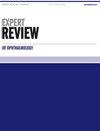目前小儿圆锥角膜患者的临床治疗方法
IF 0.9
Q4 OPHTHALMOLOGY
引用次数: 0
摘要
由于儿童和成人角膜的结构差异,圆锥角膜(KC)被认为在儿科比成人更具侵袭性。儿童KC的治疗干预是否应该与成人KC不同,这是有争议的。涵盖的领域我们调查了儿童和成人KC在疾病严重程度和进展率、治疗时机和预后的重要因素方面是否存在实质性差异。然后,根据现有证据讨论了当前治疗方式的可行性。专家意见尽管有几个相互矛盾的报告,儿科KC在最初诊断时更严重,进展更快。进程可以通过多种方式进行追踪,包括使用Belin ABCD进程系统。控制眼部过敏和揉眼是治疗的第一步。上皮脱落德累斯顿方案仍然是阻止儿童KC进展的金标准CXL方法,而上皮脱落加速CXL可能是另一种选择。在儿科患者中,穿透性角膜移植术和板层性角膜移植术都具有挑战性;然而,板层角膜移植术似乎具有较低的移植排斥率的优点。在儿童KC中,不推荐使用上皮上CXL、角膜内环段植入术、准分子激光消融+ CXL方案。然而,儿童KC仍需要循证临床实践指南。本文章由计算机程序翻译,如有差异,请以英文原文为准。
Current clinical approach to pediatric keratoconus patients
ABSTRACT Introduction Due to structural differences between pediatric and adult corneas, keratoconus (KC) is considered more aggressive in pediatrics than in adults. It is controversial whether therapeutic intervention in pediatric KC should differ from adult KC. Areas covered We investigate if there is a substantial difference between pediatric and adult KC regarding disease severity and progression rate, factors important for treatment timing and prognosis. Then, feasibility of current treatment modalities is discussed based on current evidence. Expert opinion Despite several conflicting reports, pediatric KC is more severe at initial diagnosis with faster progression. Progression can be tracked in a variety of ways, including with the Belin ABCD progression system. Controlling ocular allergy and eye rubbing is the first step in treatment. The epithelium-off Dresden protocol remains the gold standard CXL approach to stop progression in pediatric KC, whereas epithelium-off accelerated CXL might be an alternative. In pediatric patients, both penetrating and lamellar keratoplasty can be challenging; however, lamellar keratoplasty seems to offer the advantage of lower graft rejection rate. Epithelium-on CXL, intracorneal ring segment implantation, excimer laser ablation + CXL protocols are not recommended in pediatric KC. Nevertheless, there remains a need for evidence-based clinical practical guidelines in pediatric KC.
求助全文
通过发布文献求助,成功后即可免费获取论文全文。
去求助
来源期刊

Expert Review of Ophthalmology
Health Professions-Optometry
CiteScore
1.40
自引率
0.00%
发文量
39
期刊介绍:
The worldwide problem of visual impairment is set to increase, as we are seeing increased longevity in developed countries. This will produce a crisis in vision care unless concerted action is taken. The substantial value that ophthalmic interventions confer to patients with eye diseases has led to intense research efforts in this area in recent years, with corresponding improvements in treatment, ophthalmic instrumentation and surgical techniques. As a result, the future for ophthalmology holds great promise as further exciting and innovative developments unfold.
 求助内容:
求助内容: 应助结果提醒方式:
应助结果提醒方式:


